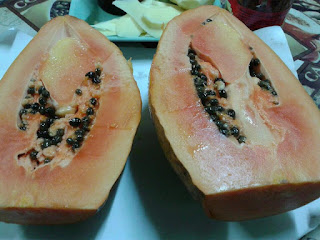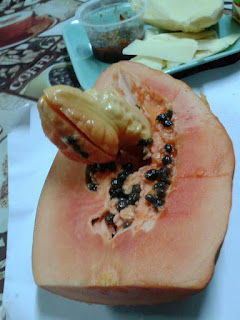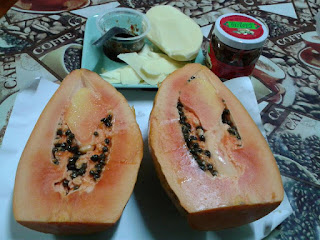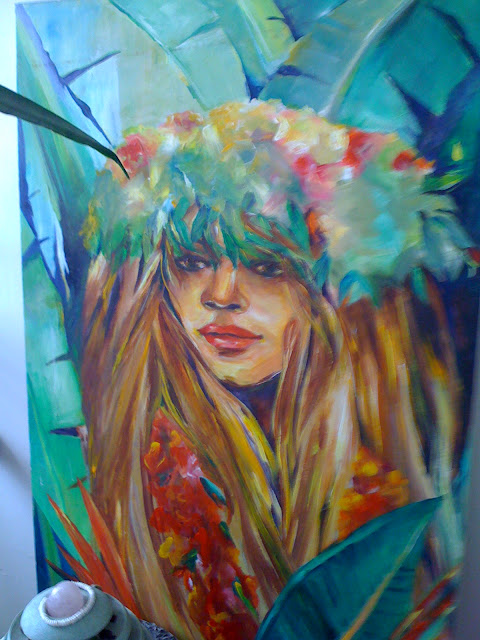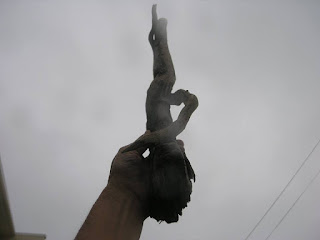UHM faculty condemn academic freedom violations
The university's College of Tropical Agriculture and Human Resources has restricted and violated one of it's own professor's academic freedom, and a group of his professional colleagues are speaking out against his mistreatment. Sixty faculty members at the University of Hawaii at Manoa have signed a letter sent to Manoa Chancellor
Robert Bley-Vroman, the vice-chancellor for academic affairs, and Maria Gallo, Dean of the university’s College of Tropical Agriculture and Human Resources (CTAHR) asking that the university acknowledge the restrictions and violations of academic freedom imposed on CTAHR Professor Hector Valenzuela.
For years now, the college has been accepting money from agrochemical companies such as Monsanto while simultaneously advocating for a style of agriculture that is dependent on the products created by these companies, namely Genetically Modified Organisms that can withstand the use of the companies’ lucrative pesticides. Dr. Valenzuela’s field of expertise involves discovering ways in which crops can thrive in our climate without the use of the GMO-pesticide model of agriculture. The 20+ year CTAHR veteran spent six years in the early ‘90s developing the first long-term organic farming research project in Hawaii and the Pacific region. But around 1998, when Monsanto money began entering the equation, his research plot was shut down by the college. Over the next 15 years, Valenzuela tolerated what he calls a climate of “bigotry, retaliation and hostility” in retaliation for his failure to tow the dominant CTAHR line (documented in Paul Koberstein’s article “The Silencing of Hector Valenzuela,” published here). The university denies his accusations.
...2) “The role of CTAHR as a land-grant institution is to assist all members and sectors of Hawai‘i’s food and agricultural system to reach their full potential in an environmentally and socially compatible way.”
Increasingly, large areas of agricultural land, representing over 70% of the area devoted to the production of diversified and edible crops in Hawai’i, have been acquired through lease or purchase by five large seed-and-pesticide corporations (Monsanto, Syngenta, Dow Chemical, BASF and DuPont-Pioneer) that have come to Hawai‘i over the last five decades. Their purpose was not to improve or increase Hawai‘i’s food production but rather to exploit Hawai‘i’s ideal soil and climate conditions in order to grow and test genetically-engineered and pesticide-resistant seeds for export to other areas worldwide. It is surely questionable whether, in terms of a land-grant institution’s mission, such corporations should even be treated as members of “Hawai‘i’s food and agricultural system” at all. Yet CTAHR does not merely regard them as an indispensable part of “diversified agriculture”, it gives the appearance of favoring them over other branches, and has provided its full support, in articles, workshops, and outreach programs, to the various activities of these corporations. Time and energy used in such ways have inevitably detracted from time and energy that could have been spent in support of Hawai‘i’s food producers.
Emergency Quarantine Eyed to Save Hawaii's Ohia Trees From Annihilation -...
CIVILBEAT.COM
And is that already what happened to the Wili Wil trees ? Every single tree on the island of Maui died within 9 months.
....Gall wasps...? How about a modified Gall Wasp set free...or no wasp at all...Just GM effects...How can we believe when we are told anything from the state ag, or the U of H? They did the modifications with Monsanto, and all the other biotech companies...
Do you know they are testing 300 GMO vaccines in Hawai'i on you, your kids, and our pets without our knowledge too? Since 2007...
*** Close down the U of H...and quarantine all their work...
GMO papayas make people sick...
From a few years ago...when I met this man...
I met someone at the beach yesterday. He had been eating GMO papaya, and became sick with arthritis. This was in the late 90s. That was the only change in his life when he got ill. A healthy and strong person who was a bike guide for the down hill Haleakala run... He ate the papaya at the 1st stop on the run. His sister took a good look, and saw that the GMO papaya had been what he was eating. The flower/fruit stand advertised that type as their product... (They have names - the types - like Sunshine or Sunrise - LOL)
This man's sister it turns out is Eloise.... OMG This woman single handedly brought the GMO issue to the eyes, ears and minds to the people of Hawai'i. Eloise is a hero. Starting groups, writing letters to the editor, meeting with public health officials, going to the capital to bring our concern and going onto public access TV to make sure all were informed.... I was happy to know the history of GMO activism. But, it's more then that... The truth was hidden, and it took 1 person to show us the way. Mother Earth's way is best. We do not get sick...Mother Nature loves us.
Eloise On Maui:: " Thanks Kimberly...I did do some of those things, but not single handedly...and mainly brought the GMO issue to the attention of Maui...and am proud to add I told Walter Ritte about GM kalo. He took care of that in an awesome manner!!!"
25 September 2014 at 04:12 · 1
I woke up today startled in my dreams...The GMO papaya and the Ohia...Came into my dreams to tell me...
10/21/2013 on a forum with people in Puna on the Big Island of Hawai'i...discussing the problem 2 years ago...Has been noticed for 6 years; the die off...
"We have watched this event very closely for 4 years now, At first we thought must be Geothermal. Possible Fracking since we live 3 miles from the plant. The 120 year old trees started to die first between tangerine acres to Sanfords cinder pits towards Kalapana.
Only after a couple years we then noticed the same burn in areas as far as Kapoho, Seaview, even now Paradise Park and Hawaiian acres. So time has started to change our minds on what could be causing the dieback. Previous diebacks 50"s and 70"s were after eruptions on the east rift zone, And this past 3 to 5 years have been active with the fires and lava.
The way the trees will burn from top to bottom, or simply fry orange within a month made us think about air problems more than ground? Pulling up some recent area pictures of the Puna coast, we could not believe how much land had been ripped and dozed. Mostly lower Puna, from Hawaiaan Beaches, to Kapoho, Poihiki, along the coast to Seaview.
Looks like hundreds if not thousands of acres of new PAPAYA. Geothermal looks small in comparison to the papaya in there back yard. When we have variable winds do these papaya farmers not spray? What would they be spraying? Looks like agent orange the way they are suited for space.
Made us think about there upward spray and how it could become airborne. Run off during hard rains in Kapoho, of these hundreds of acres, could it be hazardous to marine life? Anyway sorry for the deep concern and somewhat radical thinking. go easy and we would appreciate any other perspectives."
Posted - 10/21/2013 : 19:45:32 Show Profile Reply
"Some of the Knee Jerking things I through up on this post seem a little more plausible after the pesticide article in the paper today. If people are being affected by the agricultural practices, certainly a very sensitive tree like our rain making OHIA Could be affected by the higher levels of pesticides?
Google maps of lower puna clearly shows how much land is being farmed right now. Glance behind Green mountain, or behind Geothermal, Across from Poihiki, Even all the way up Opi'ikoa. Anyway we all get most of our winds off this coast up the pali then over the mountain.
The burn is heavy right now down on the coast of Kapoho too? Probably not the problem, but let's keep an Open mind when it comes to pesticides with GLYPHOSATE in it. Papaya is 20 cents a pound, to some this may not be worth the future health problems? Peace out. P.S very sad dying land and oceans are all around us, Fish kills, and staph are on the rise."
10/21/2013
Authors
Andrew K. Gonsalves, E ducational Specialist
Stephen A. Ferreira, Extension Plant Pathologist
Department of Plant Pathology, College of Tropical Agriculture and Human Resources
University of Hawaii at Manoa
PATHOGENS & HOSTS
Four Ceratocystis species have been reported to occur in Hawaii (Raabe, et al., 1981). The following is a list of the reported pathogens from this genus (Ceratocystis) and the hosts they infect. The list is organized by the scientific name of the pathogen species (CAPITAL LETTERS), followed by the various susceptible plant hosts. Words in blue indicate what symptom or disease a given pathogen causes on the listed hosts.
CERATOCYSTIS ADIPOSA
Black Rot:
sugar cane (Saccharum officinarum)
CERATOCYSTIS FIMBRIATA
Black Rot:
sweet potato (Ipomoea batatas)
Blight:
syngonium (Syngonium podophyllum)
CERATOCYSTIS KOEPKEI
Yellow Spot:
sugar cane (Saccharum officinarum)
CERATOCYSTIS PARADOXA
Bleeding Canker:
coconut palm (Cocos nucifera)
Fruit Rot:
banana (Musa acuminata, AAA)
Fruit and Butt Rot:
pineapple (Ananas comosus)
Pineapple Disease, Parasitic:
sugar cane (Saccharum officinarum)
Other:
tawny daylily (Hemerocallis fulva)
Hemerocallis sp.
Plumeria sp.
TAXONOMY
KINGDOM: Mycetae (fungi)
DIVISION: Eumycota
SUBDIVISION: Ascomycotina (The sac fungi)
CLASS: Pyrenomycetes (The perithecial fungi)
ORDER: Sphaeriales
GENERAL CHARACTERISTICS
No information is available for this section at the moment, please check future Knowledge Master Versions.
TYPES OF DISEASES
No information is available for this section at the moment, please check future Knowledge Master Versions.
MANAGEMENT
No information is available for this section at the moment, please check future Knowledge Master Versions.
REFERENCES
Agrios, G.N. 1988. Plant Pathology, 3rd edition. Academic Press, Inc: San Diego. 803 pp.
Farr, , D.F., G.F. Bills, G.P. Chamuris, and A.Y. Rossman. 1989. Fungi on Plants and Plant Products in the United States. APS PRESS: St. Paul, Minnesota. 1252 pp.
Raabe, Robert D., Ibra L. Conners, and Albert P. Martinez. 1981. Checklist of Plant Diseases in Hawaii. Hawaii Institute of Agriculture and Human Resources, College of Tropical Agriculture and Human Resources, University of Hawaii (Information Text Series 022).
Streets, R.B. 1982. The Diagnosis of Plant Diseases: a field and laboratory manual emphasizing the most practical methods for rapid identification. The University of Arizona Press: Tucson, Arizona.
JUNE 1994
Where is the papaya in that list ...?
Because it never really was a problem...in the 1st place.
I believe in my dream more then I can believe what the people at the U of H say.
These papaya and their insufficient attempts at follow-up studies have included :
*testing too few UH seeds to provide statistically significant results,
*a pollen study by an undergraduate on the island with the least contamination
*a promise of a study by Carol Gonsalves (Dr. Gonsalves’wife) that has not materialized.
*Promises of GUS testing for papayas being available to farmers and gardeners through the Cooperative Extension service have not materialized either.
*Finally, no attempts at GMO Papaya clean-up by the responsible institutions have been made, to date.
**This pilot study shows more GMO Papaya contamination than anyone expected. **
Our recommendations include:
1. Governments around the globe should not introduce the GMO Papaya into any new growing regions. Even as a field trial, GMO Papaya cannot be contained.
2. Considering the adverse consequences of the GMO Papaya, the Hawaii Department of Agriculture should not commercially release any more GMO crops in Hawaii.
3. The University of Hawaii should clean up the GMO contamination in their non-GMO papaya seeds before selling any more.
4. GMO Papaya testing should be offered to Hawaii Island farmers and gardeners either free of charge or at a nominal cost by the University of Hawaii and PBARC/USDA (Pacific Basin Agriculture Research Center/United States Department of Agriculture), so they can rogue out GMO Papaya contamination.
5. Education about using traditional and alternative methods of Papaya ringspot virus management including introducing PRSV tolerant 3
People in Thailand are wondering what is happening to their Papayas...
GMOs are outlawed in Thailand, but it didn't stop him...
This is the culprit here...Not only did he develop the HOAX, but developed the GM Papaya, went on to be director of USDA in The Hawai'i area, and took the GM Papaya in his suitcases to Thailand...On a summer day in 1997 Dennis Gonsalves, a plant pathologist at Cornell University, boarded a flight to Thailand with papaya plants in his carry-on luggage. He and his colleagues had spent a decade genetically altering the plants...
GMO papaya in Thailand brought from Hawaii in 1997 by Dennis Gonsalves and against Thai laws too. Bought in a market in May 2013
Looks like I am not far off from the truth...After learning about the olive trees in Italy after this post, and then finding this info brochure today. Ceratocystis Fimbriata...an exoctic strain introduced, or new strain...?
There you go...Monsanto!
Exactly what the GM Papaya was modified for...Black Spot Virus!
CERATOCYSTIS FIMBRIATA
Black Rot:
sweet potato (Ipomoea batatas)
 So many people depended on these 100s of year old trees to make a living...Now a few "scientists" and workers for bio-tech including their family and friends will profit, or rather put food on their families tables while we become poor, starving and ill with strange diseases, and symptoms.
So many people depended on these 100s of year old trees to make a living...Now a few "scientists" and workers for bio-tech including their family and friends will profit, or rather put food on their families tables while we become poor, starving and ill with strange diseases, and symptoms.
